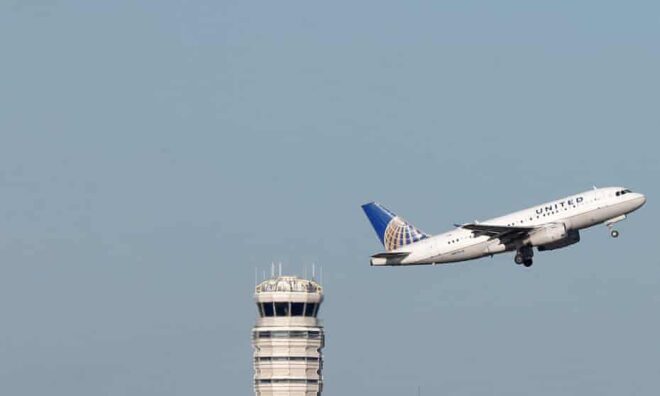
United Airlines Flight 971, en route from Rome to Chicago, made an emergency diversion to Shannon Airport in Ireland following the discovery of a handwritten bomb threat onboard. The Boeing 767-300, carrying 207 passengers and 11 crew members, landed safely at Shannon at approximately 1:42 PM local time.
Discovery of the Threat
The alarm was raised when a cryptic message, suggesting the presence of a bomb, was found scrawled inside one of the aircraft’s lavatories. Upon this discovery, the flight crew promptly declared a Mayday and coordinated with air traffic controllers to divert to the nearest suitable airport, which was Shannon.
Emergency Response at Shannon Airport
Upon landing, the aircraft was directed to a remote stand, away from the main terminal. Emergency protocols were activated, involving local fire services, the Health Service Executive (HSE) National Ambulance Service, and An Garda Síochána (Irish police). Passengers remained onboard for approximately 40 minutes while an initial external inspection of the aircraft was conducted.
Passenger Disembarkation and Screening
After the preliminary assessment, passengers disembarked and were escorted to the airport’s transit lounge. Both hand luggage and checked baggage underwent thorough searches. Additionally, passengers were interviewed, and handwriting samples were collected to assist in identifying the individual responsible for the note.
Impact on Flight Operations
The unforeseen diversion led to significant disruptions for the passengers. The flight was initially scheduled to continue to Chicago at 4:00 PM. However, due to crew timing regulations and the extensive security procedures, the continuation was delayed, and the flight was ultimately canceled for that day. Passengers were accommodated overnight, with plans to resume their journey to Chicago the following day.
Official Statements and Passenger Reactions
United Airlines issued a statement acknowledging the diversion due to a “potential security concern” and emphasized their commitment to passenger safety. They assured that all customers and baggage would undergo additional security screenings and expressed efforts to get customers on their way to Chicago as quickly as possible.
Passengers expressed a mix of frustration and understanding. While the delay was inconvenient, many appreciated the crew’s professionalism and the prioritization of safety. One passenger remarked, “It’s unsettling to think about, but I’m grateful for the swift action taken to ensure our safety.”
Investigation and Security Measures
Irish authorities, in collaboration with international agencies, launched a comprehensive investigation into the incident. The collection of handwriting samples aimed to identify the author of the threat. Such incidents highlight the persistent challenges faced by airlines and security agencies in ensuring passenger safety amidst evolving threats.
Historical Context of In-Flight Threats
This incident is reminiscent of past security scares in aviation. For instance, in 2006, British authorities thwarted a plot to detonate liquid explosives on transatlantic flights, leading to stringent regulations on carrying liquids onboard. While the 2018 threat was a hoax, it underscores the necessity for vigilance and robust security protocols in the aviation industry.
Conclusion
The diversion of United Airlines Flight 971 serves as a testament to the effectiveness of established aviation security procedures. The coordinated efforts of the flight crew, airport authorities, and security personnel ensured the safety of all onboard. While such incidents cause disruptions, they reinforce the critical importance of maintaining rigorous security measures in global air travel.